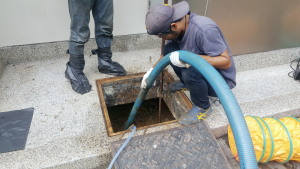Pianos are a cherished possession in many homes, representing both an artistic legacy and a lifetime of memories. They also carry significant financial value.
Due to their size and weight, moving them is a highly specialized task that requires skill and precision. Read on or click here at https://www.mountainpiano.com/ for reasons why you should trust experts for your next piano relocation:

Safety
Professional piano movers have the training, equipment, and experience to safely and securely transport your instrument. They are familiar with all kinds of moving scenarios and can anticipate problems before they arise. This allows them to complete the move quickly and efficiently. They follow a streamlined process that minimizes the amount of disruption to your daily life.
Pianos are extremely heavy and require specialized equipment and expertise to maneuver them without damage. Improper handling can lead to sprains, back injuries, and property damage. It can also cause internal damage to the strings and soundboard, resulting in costly repairs or even loss of value.
Local movers use a variety of tools to facilitate smooth relocations, including piano dollies and ramps, heavy-duty straps, and padding. They also have the skills and manpower to navigate tight entrances, stairs, and elevators. They can also dismantle and reassemble the piano as needed, which helps save time and reduces the risk of injury. They also offer a wide range of insurance options to protect your investment and provide peace of mind.
Reliability
When it comes to a list of the most difficult items to move, pianos rank at the top. These complex musical instruments are not only heavy, but they also have delicate internal mechanisms that can easily be damaged by mishandling during a move. Hence, they require specialized training and expertise to transport safely.
Moreover, such instruments are highly sensitive to changes in temperature and humidity. Insufficient precautions during a relocation can cause permanent damage and expensive repairs. Fortunately, professional piano movers are well-versed in these aspects and are equipped with the right tools to safeguard these valuable items.
Furthermore, these professionals follow a streamlined process that allows them to complete the task in a much shorter timeframe than an amateur. This efficiency reduces the risks of accidents that can occur due to fatigue or poor handling techniques. In addition, such movers have insurance coverage to mitigate financial loss in the event of any unfortunate incidents. Look for companies with years of specialized piano moving experience and check their credentials. Also, choose a company that offers a clear estimate with no hidden fees.
Insurance
Pianos are not your average household items. They’re complex musical instruments with thousands of delicate parts, and a slight misstep during transportation can cost you thousands in repairs. That’s why you need movers with experience, specialized equipment, and comprehensive insurance coverage to protect your investment and avoid costly damage.
Insurance coverage offered by expert piano movers includes transit insurance to protect your investment against physical damage during the move. This type of insurance is generally included in the overall price of the relocation or offered as an add-on. It’s important to verify the amount and terms of the policy, as it can vary from company to company.
When choosing a piano moving service, look for one with specialized expertise and excellent customer reviews. Ask for pricing information, including any additional costs related to storage and climate-controlled shipping. The cost of the service will depend on the size and type of piano being moved, as well as the distance of the move. Accessibility challenges like stairs or narrow hallways may also increase the labor cost.
Time Efficiency
A professional piano move will be faster and more efficient than a DIY effort. You will not have to worry about your safety or the time it takes for your friends or family members to help you, and your piano will be in great hands.
Expert movers understand that your schedule is busy. They can provide flexible scheduling options to fit your needs, so that you do not have to rush through the moving process or sacrifice the care of your instrument. Additionally, their specialized skills and tools allow them to work quickly without damaging the instrument or its surroundings.
Reliable movers will provide service guarantees and customer reviews to give you confidence that they are capable of meeting your expectations and budget. In addition, they will offer open communication to ensure that your input shapes the moving process. This approach helps to avoid unexpected costs, like hidden fees for stairs or long carries. It also allows you to plan, so that your piano arrives at its destination on time.
Peace of Mind
Expert piano movers have the necessary skills to ensure your beloved instrument makes it safely into its new home. They take special care with each step of the move, reducing the risk of damage. They also offer insurance coverage, allowing you to rest easy knowing your investment is protected against mishaps.
In addition, professional piano movers follow a streamlined process that saves time and energy. Using specialized equipment like piano dollies and straps, they are able to transport your piano with greater efficiency than an amateur might be able to achieve on their own. This can reduce your stress levels during the move and help you avoid costly repairs or replacements.
Moving homes is a stressful experience, especially when you have to transport a large and delicate item like a piano. However, with the right help, you can enjoy the convenience and peace of mind that comes with working with a reputable piano moving service. These experts are trained to handle all types of pianos and can even disassemble and reassemble your piano for safe transportation. They can also provide storage solutions for your piano, making it easier to manage a long-distance move.


